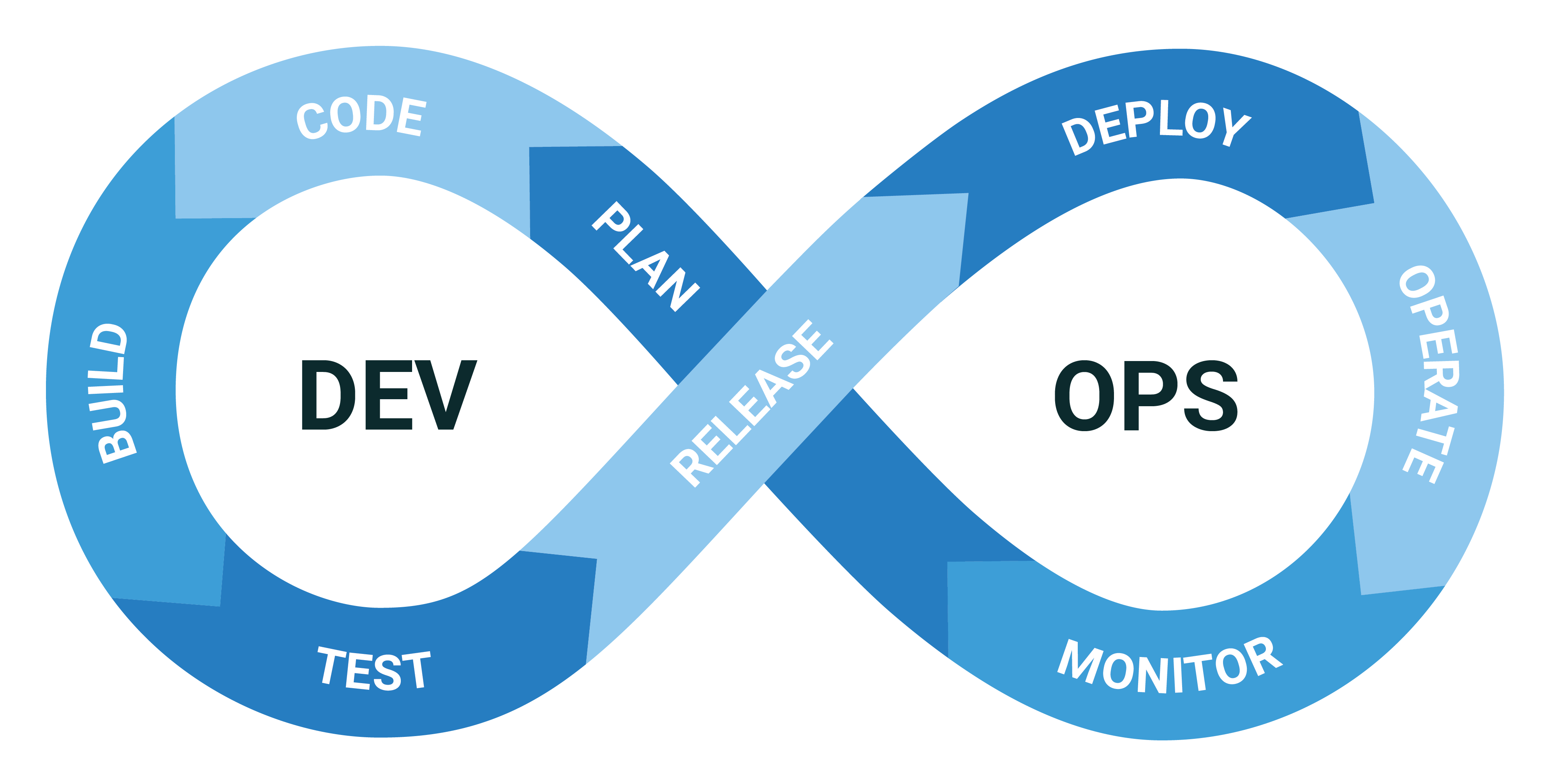🚀 Understanding DevOps: A Comprehensive Questionnaire 🚀
 Sandeep Jangid
Sandeep JangidTable of contents
- 💡 What is DevOps?
- 💡 How does DevOps differ from traditional development and operations?
- 💡 What are the core principles of DevOps?
- 💡 Explain DevOps lifecycle?
- 💡 What are popular DevOps tools and their functions?
- 💡 How does automation contribute to DevOps practices?
- 💡 What are the challenges in implementing DevOps in an organization?
- 💡 How can organizations foster collaboration in a DevOps environment?
- 💡 How can DevOps impact an organization's success?

DevOps has revolutionized the software development landscape, promoting collaboration, automation, and continuous improvement. Let's explore DevOps concepts through a fun and interactive questionnaire! 🤓
💡 What is DevOps?
DevOps is a cultural and technical movement that emphasizes collaboration and integration between development 👩💻 and operations 🔧 teams.
It breaks down silos, aligning the entire software development lifecycle.
💡 How does DevOps differ from traditional development and operations?
Traditional Development and Operations: 🕰️
- Siloed teams, separate workflows, and manual processes.
DevOps: 🤝
- A collaborative culture, integrated workflows, and automation.
💡 What are the core principles of DevOps?
Continuous Integration (CI): 🔄
Frequently integrate code changes into a shared repository.
Automate testing to ensure code quality.
Continuous Delivery (CD): 🚀
Automate the process of deploying code to production-like environments.
Enable reliable and frequent releases.
Infrastructure as Code (IaC): 🏗️
Manage infrastructure using code for consistency and reproducibility.
Automate provisioning and configuration.
Monitoring and Logging: 📊
Real-time monitoring to detect issues promptly.
Efficient logging for better troubleshooting.
Automation: 🤖
Automate repetitive tasks to save time and reduce errors.
Enable efficient and reliable processes.
💡 Explain DevOps lifecycle?
The DevOps lifecycle encompasses a series of stages that organizations go through to transform their software development and delivery process. It includes:
📝 Plan: Define project requirements, set goals, and plan the development process.
🧱 Code: Developers write and collaborate on code in a version-controlled repository.
🏗️ Build: Automate the build process to compile code and perform initial testing.
✅ Test: Execute automated tests to validate code functionality and identify bugs.
🚀 Deploy: Automate deployment to staging and production environments.
🏭 Operate: Monitor and manage applications in production to ensure reliability.
📈 Monitor: Continuously monitor performance, security, and user experience.
🔄 Feedback: Gather feedback from users and stakeholders for improvements.
💡 What are popular DevOps tools and their functions?
Version Control: 📚
- Git: Efficiently manage code repositories and track changes.
Continuous Integration (CI): 🔄
Jenkins: Automate building, testing, and deploying code.
CircleCI: Enable continuous integration with cloud-based workflows.
Configuration Management: 🔧
Ansible: Automate configuration and application deployment.
Puppet: Manage infrastructure and application configurations.
Chef: Automate infrastructure management and configuration.
Containerization: 🐳
Docker: Package applications with their dependencies for consistent deployment.
Kubernetes: Manage containerized applications and automate scaling.
Cloud Infrastructure: ☁️
AWS (Amazon Web Services): Provides cloud computing services and infrastructure.
Azure: Microsoft's cloud computing platform for building, deploying, and managing applications.
GCP (Google Cloud Platform): Offers cloud computing, storage, and machine learning services.
💡 How does automation contribute to DevOps practices?
⏱️ Faster Execution: Automated testing and CI speed up development cycles.
🔄 Continuous Delivery (CD): Automated deployment ensures reliable releases.
🛡️ Enhanced Security: Automated scanning identifies vulnerabilities.
📈 Continuous Monitoring: Real-time metrics and alerts improve performance tracking.
🤝 Collaboration: Automated workflows streamline team coordination.
💰 Cost Optimization: Automation scales resources efficiently.
🚀 Faster Time-to-Market: Automation accelerates software delivery.
🧠 Reduced Human Error: Automation ensures consistency and reliability.
📚 Knowledge Sharing: Automated documentation facilitates team learning.
💡 What are the challenges in implementing DevOps in an organization?
🤝 Cultural Resistance: Siloed teams and collaboration hurdles.
🔒 Legacy Systems: Integrating with existing legacy infrastructure.
📚 Skill Gaps: Training teams on new tools and practices.
⏳ Time Constraints: Adapting existing workflows to DevOps.
📊 Measuring Success: Defining relevant metrics for evaluation.
💼 Organizational Alignment: Ensuring all departments are on board.
🚀 Rapid Change: Coping with the speed of DevOps adoption.
🛠️ Tool Selection: Choosing the right DevOps tools.
🔄 Continuous Learning: Encouraging a culture of constant improvement.
💰 Budget Constraints: Allocating resources for
💡 How can organizations foster collaboration in a DevOps environment?
🚀 Shared Goals: Align teams around common objectives.
📞 Open Communication: Encourage transparent interactions.
👥 Cross-functional Teams: Form teams with diverse expertise.
🧠 Knowledge Sharing: Promote sharing insights and skills.
🤗 Supportive Culture: Value and support collaboration.
🌟 Recognize Achievements: Celebrate collaborative efforts.
🎓 Training: Enhance collaboration skills through training.
📈 Measure Progress: Define metrics to evaluate collaboration.
💡 How can DevOps impact an organization's success?
⏩ Faster Time-to-Market: 🏭 Rapid releases meet market demands.
📈 Continuous Improvement: 🔄 Embrace a culture of learning.
💰 Cost Savings: 💸 Automation and efficiency reduce expenses.
🤝 Collaboration: 👥 Teams work together for common goals.
✔️ Improved Quality: 🛠️ Early issue detection ensures stability.
🌟 Customer Satisfaction: 😃 Fewer disruptions lead to happier customers.
In conclusion, DevOps is a game-changer 🎮 that brings development and operations together to create high-quality software, faster! By embracing collaboration, automation, and continuous improvement, organizations can succeed in the dynamic software development landscape. So, let's dive into the DevOps journey and revolutionize how we build and deliver software! 🚀🌟
Subscribe to my newsletter
Read articles from Sandeep Jangid directly inside your inbox. Subscribe to the newsletter, and don't miss out.
Written by

Sandeep Jangid
Sandeep Jangid
Accomplished IT professional with in-depth experience of managing cloud-based technology & effectively handling configuration & deployment of infrastructure & services. Gained hands-on experience in implementing core DevOps concepts such as containerization, virtualization, version control, cloud computing, database management & administration, load balancing, etc. by using a wide variety of technologies Drives excellence in every project to deliver outstanding results.